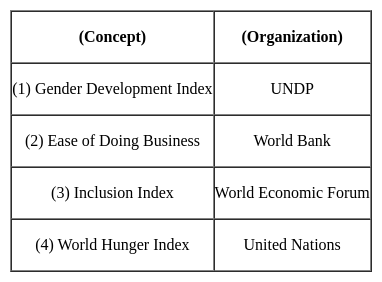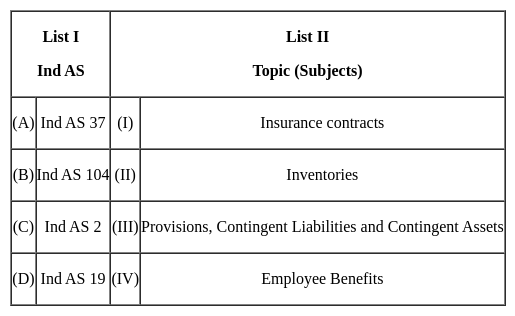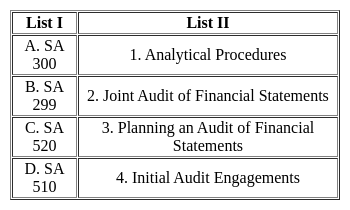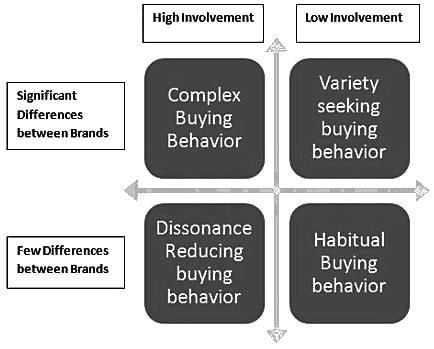UGC NET Paper 2 Commerce Mock Test - 3 - UGC NET MCQ
30 Questions MCQ Test UGC NET Mock Test Series 2025 - UGC NET Paper 2 Commerce Mock Test - 3
Which of the following is the function of Multilateral Investment Guarantee Agency (MIGA)
Which of the following narratives explain the Leontief paradox in international business:
‘Average clause’ in insurance is applicable for which one of the following cases?
Which of the following statements is/are true with respect to Income Tax?
1. Income tax is levied on the income of individuals.
2. In India, the nature of the income tax is progressive.
3. The first income tax is generally attributed to Egypt.
4. Income tax generally is computed as the product of a tax rate times taxable income.
Which amongst the following pairs is not correctly matched ?

Match List I with List II

Choose the correct answer from the options given below:
Which of the following consumer buying behaviours involves least efforts while making a purchase decision?
Which of the following is a small company?
Direction: In the question given below, there are two statements marked as Assertion (A) and Reason (R). Mark your answer as per the codes provided below.
Assertion (A): Marginal cost and differential cost do not convey the same meaning in all the circumstances.
Reason (R): Differential cost increases or decreases due to change in fixed cost.
Which of the following is not a feature of a development bank?
What can be concluded from the passage above?
Compulsory winding up takes place under companies Act 2013:
(I) If a company is unable to pay its debt.
(II) If the company has by special resolution resolved that the company be wound up by the tribunal.
(III) If the company has acted against the interest of the integrity or morality of India, the security of the state.
(IV) if there is Suspension of the business for one year from the date of incorporation.
Which of the following is/are correct?
The minimum number of persons required to form a private ltd. company and a public ltd company respectively are ______________ .
Consider the following statements. Which of the alternatives given below is correct?
(i) A firm's marketing information system is a component of its marketing research system.
(ii) The most common forms of marketing researches conducted in most of the firms are the measurement of market potential and the analysis of market share.
(iii) Survey research is seldom used for studying consumer perception and attitudes.
(iv) The concept of cognitive dissonance is relevant to study consumer's post-purchase behaviour.
Non-Banking Financial Companies (NBFCs) are the Financial Intermediaries engaged primarily in the business of:
i. Accepting Deposits
ii. Lending loans and advances
iii. Leasing
iv. Hire purchasing
Under Section 87A of Income Tax Act, 1961, an individual who is resident in India and whose total income does not exceed Rs. 3,50,000 is entitled to claim rebate up to a maximum of ________.
Which of the following is a customer segmentation strategy in marketing?
The main objective of the International Monetary Fund (IMF) is to:
Assertion (A): Collaborative planning, forecasting, and replenishment (CPFR) facilitate joint planning and decision-making between suppliers and buyers in the supply chain.
Reasoning (R): CPFR aims to improve supply chain efficiency by sharing information, reducing uncertainty, and enhancing communication between trading partners.
Which of the following performance appraisal techniques involve(s) highest emphasis on results?
Mainly to avoid _______ we conduct audit in the business concern.
Consider the following statement:
Statement (A): When a banker provides the locker facility to a customer, the relationship between them is that of bailor and bailee.
Statement (B): Debentures are governed by company law.
Which convention gave birth to the International Monetary Fund (IMF)?
Which one among the following grew along with insurance business in India?
|
92 docs|125 tests
|

















